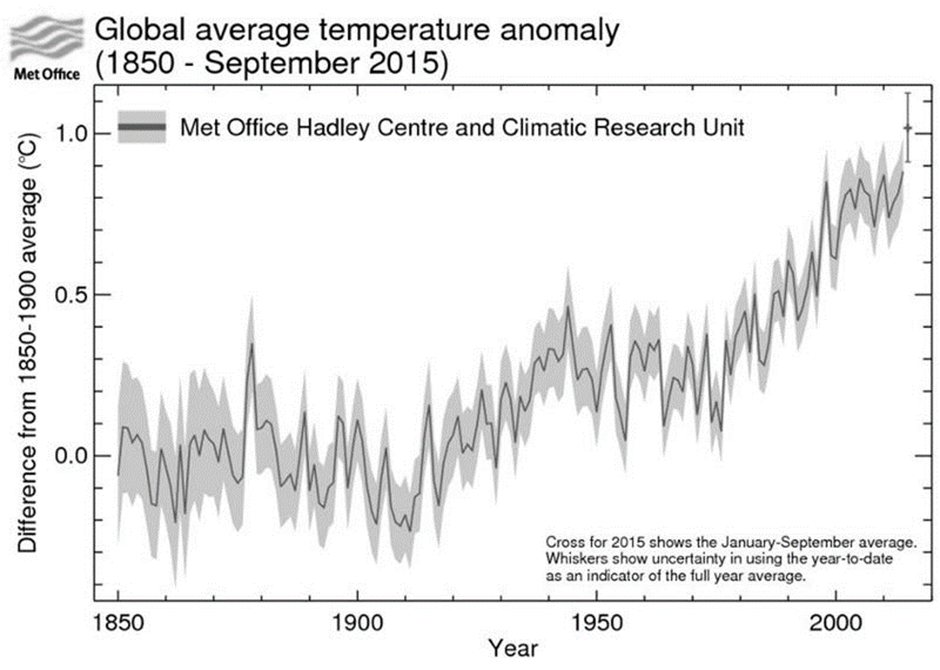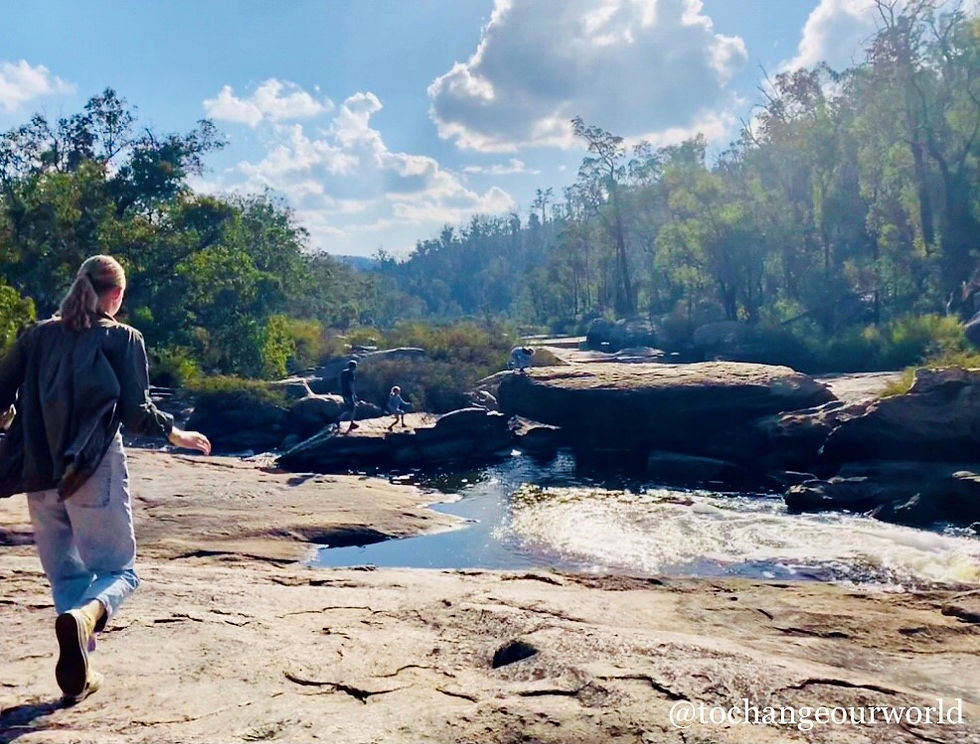Are we too late? A brief climate report 2022
- tochangeourworld
.jpg/v1/fill/w_320,h_320/file.jpg)
- May 11, 2023
- 8 min read
Updated: Aug 16, 2023
September 2022
Climate change, ocean pollution, rising temperatures and sensationalism.
Recently, I spent a lot of time researching ocean pollution for a term project. This took me down loopholes of articles, opinions, and emotions on climate change as a whole and had me thinking hard about the one sentence every media site loves to dwell on: are we too late? This is a compilation of research detailing where we are in the climate crisis right now, with the conclusion that maybe we're not too late...
All references are linked below, definitions and key facts are in bold and graphs are planted between to visually represent the writing. I hope knowing a fraction of the science brings back some hope and inspires you into action. Thank you for being here xx

Discussions on climate change have been active for decades, but now they are frequenting our everyday lives in a bolder way. Newspapers, online journals, social media, advertisements, tv, film, art, politics – they all influence the way we perceive the climate crisis in one way or another. The media often sensationalises the climate change narrative by exaggerating insignificant details and controversial opinions which leads to a lack of insightful information and action plans.
Sensationalise: (verb) to present information in a way that tries to make it as shocking or exciting as possible.
Climate change is impossible to ignore - from companies greenwashing their marketing to finding plastic along the shoreline of every beach – but oftentimes it’s hard to separate fact from fiction.
Climate Change
Climate change: (noun) a change in global or regional climate patterns. In particular, a change apparent from the mid to late 20th century onwards and attributed largely to the increased levels of atmospheric carbon dioxide produced by the use of fossil fuels.
Climate change, or the ‘climate crisis’, refers to the human-induced, rapidly changing climate of our Earth. Climate change is caused largely by global warming, which refers specifically to the rise in global temperatures since the twentieth century. The rising temperatures are due to humans burning fossil fuels, which include natural gases, coal and oil. When these fuels are burned, they release what’s called greenhouse gases into the atmosphere where they trap the suns heat. These gases include carbon dioxide, chlorofluorocarbons, water vapor, methane, and nitrous oxide.
Greenhouse Gases
Carbon-dioxide is the main greenhouse gas and is released (in very small amounts) when humans or animals breathe out and in large amounts when burning fossil fuels.
Chlorofluorocarbon is a chemical compound. It can be any of several organic compounds composed of carbon, fluorine, and chlorine. It is produced as easily evaporative derivatives of methane, ethane, and propane and is released when burning fossil fuels.
Methane is the simplest hydrocarbon and a colourless, flammable gas. It is produced naturally from rotting vegetation in marshes and when burning fossil fuels.
Nitrous-oxide is a greenhouse gas used in medicine known as laughing gas or happy gas. It is also used in the manufacturing of rockets and is released when burning fossil fuels.
Earth’s climate is prone to changes naturally, but only very slowly over hundreds of years. Since the 1900’s humans have been accelerating the process with fossil fuels, causing extreme weather events and global weather disasters.
Weather vs Climate
Disastrous weather events happen more frequently and on a larger scale because of global warming, but where ‘weather’ refers to individual events over hours or weeks, ‘climate’ refers to the state of the climate system over multiple decades.
Before the 20th century, the Earth’s climate rose and fell gradually, however since the Industrial Revolution and mid-1950’s temperatures have been on the rise.

Study from the Met Office Hadley Centre and Climatic Research Unit graphing the rise in global temperatures from 1850 – 2015
In 2022 we are 1.2°C above pre-industrialisation averages (1850-1900). Scientists have agreed that in order to reverse the damage we’ve done, we must keep this number below 1.5°C, reaching no higher than a 2°C increase maximum.
United Nations Climate Change Conference
This goal of 1.5°C was agreed on by all 197 member states of the United Nations at the annual Climate Change Conference in 2015. The first COP conference was held in Berlin, Germany in March, 1995. 2015 COP was held in Paris and the agreement is hence known as The Paris Agreement. The Paris Agreement is a legally binding, international United Nations treaty that commits to keeping the rise of our climate to below 2, as close to 1.5 degrees Celsius. The agreement runs on a five-year cycle, with countries communicating their ambitions, goals, and plans. Starting from 2024, countries will be legally required to report transparently on all actions taken.
The UN Climate Conference for 2021, COP26, was held in Glasgow Scotland between 31 Oct - 12 Nov. The most substantial progress made at COP26 was The Glasgow Climate Pact. This pact is the most significant progress achieved since the adoption of The Paris Agreement. For the first time ever, the phasing down of unabated coal power was mentioned in the text, along with the phasing out of inefficient fossil fuel subsidies. To continue acting towards the 1.5°C goal, we need to halve global emissions by 2030.
Plastic Production

Primary Plastic Waste Generation (in metric tonnes) – source: No Such Place As “Away”: Plastic Pollution in the Oceans, Why We Should Care, and What to Do About It | InterAction Council
Plastic production is a major contributor to global emissions as the demand for plastics has risen exponentially since the 1950’s. Plastic poses so much of a threat because it never fully breaks down. Every single piece of plastic ever manufactured still exists in some form today. Plastic enters our waterways through littering, fishing companies and inadequate disposal and production. There, it breaks down into microplastic particles, fragmentation of which takes weeks, months or even years to occur. Microplastics have now become part of the food chain and have been found everywhere: in drinking water, salt, beer and in the soil where we grow our vegetables.
If plastic doesn’t break down, it floats around and ends up forming garbage patches in the ocean. The largest garbage patch is the Great Pacific garbage patch, located between Hawaii and California. It covers an estimated surface area of 1.6 million square kilometres, an area twice the size of Texas or three times the size of France.
The presence of plastic in our lives, and our oceans, is increasing. Plastic pollution is one of the main causes of marine species extinction, health problems for human beings and animals alike, and the destruction of ecosystems. We depend on the ocean for many things: water, food, transport, jobs, livelihood, research, health. The ocean is also capable of absorbing more than 25% of yearly CO2 emissions that come from humans as well as energy from the sun. As the climate continues to heat up, the ocean reaches its limit of energy (heat) storage, and its own waters begins to heat up. This results in mass coral bleaching and a drastic change in the environment for all the creatures living there.
Global warming on top of plastic pollution poses a dangerous threat to marine life. Plastic is accumulating more and more space under the waves, in the stomachs of sea creatures and even transporting invasive species around the globe. Globally, it is estimated that at least 50% of all sea turtles have ingested plastic. With around 8 to 10 million metric tons of plastic ending up in the ocean each year, plastic waste makes up 80% of all marine pollution. Research states that by 2050 plastic will likely outweigh all fish in the sea.
A Global Treaty
*Currently, there is no way for governments to protect the high seas, waters outside national jurisdictions. A strong Treaty would fix this by enabling the creation of vast ocean sanctuaries, off limits to destructive human activities. Negotiations for a Global Ocean Treaty have been under way for a few years now. Negotiations began in 2018, with a plan of four meetings. In August 2022, the final round of meetings, negotiations were once again declined without a further date to review. Currently, only 1.2% of our oceans are protected and researchers have stated we need to protect 30% by 2030 for the ocean to heal from all of humanities actions. Egypt, where COP27 will be hosted in 2022, has stated that this year’s conference aims to ‘foster dialogue to deliver ambitious results and develop initiatives that build on the outcomes of the third United Nations Ocean Conference’.
*Update 2023: A Global Ocean Treaty has been approved and is in the works! Countries will need to meet again to finalise the agreement, but this plan to protect 30% of the world's oceans could do wonders for protecting the oceans and marine life.
(More information here: Ocean treaty: Historic agreement reached after decade of talks - BBC News)

Australia
Australia’s emissions are now more than 20 per cent below our 2005 levels and we know more about our oceans and planet than we ever have before. Education on the climate crisis is slowly becoming more mainstream and information can virtually be found at our fingertips.
Right: Australia’s CO2 emissions 2005-2022

Australia’s Annual CO2 emissions 1900-2022
Looking ahead
The next United Nations Climate Change Conference is set to be held in Egypt from the 6th – 18th of November 2022. The overall goal and vision are to “seek to accelerate global climate action through emissions reduction, scaled-up adaptation efforts and enhanced flows of appropriate finance. We recognize that 'just transition' remains a priority for developing countries worldwide. Inclusive, rules based and ambitious, substantive outcomes, commensurate with the challenge based on science and guided by principles building on agreements, decisions, pledges, and commitments, from RIO 1992 to Glasgow 2021.” All eyes are on COP27.
Are we too late?
If governments negotiate policies placing the protection of our planet and people at their forefront, stop all companies producing harmful plastics and chemicals in massive amounts and continue educating as many people as we can, things can change. We need negotiations for a Global Ocean Treaty, along with a Global Plastics Treaty, to become definitive and action planned. We need to ensure people are educated on the facts, that media is tackling the real issues factually and that everyone is granted a seat at the table when discussing the fate of our world. Climate change is becoming a common topic discussed at every opportunity, and this is only the beginning...

KJ Fuller
I started this project with the intention of inspiring action through hope and making credible resources easy to find. The resources used for this piece are all linked below, along with handy websites to check out and know of. If there are any words you're unsure of, check our Terms + Definitions page here. If you have learnt just one thing from this, and restored a little hope, I have done what I set out to do. Thank you for being here xx
Find TCOW on Instagram and TikTok @tochangeourworld
Contact for questions + let me know how your changes are going! tochangeourworld@outlook.com
Join our mailing list below for updates on new posts! (Notifications are for new posts and events)
Helpful Resources
COP 27 - COP27 - Vision & Mission (https://cop27.eg/#/vision)
Global Goals - Goals Archive - The Global Goals (https://www.globalgoals.org/goals/)
United Nations - About Us | United Nations (https://www.un.org/en/about-us)
4Ocean - Mission – 4ocean (https://www.4ocean.com/pages/mission)

References
Agarwal, H. Will politics save the world, or destroy it? (n.d.). Force of Nature. https://www.forceofnature.xyz/the-bloom/will-politics-save-the-world-or-destroy-it
Australian Academy of Science. (2021). What is climate change? Australian Academy of Science; Australian Academy of Science. https://www.science.org.au/learning/general-audience/science-climate-change/1-what-is-climate-change
Australian Government. Australia Welcomes Positive Outcomes at COP26 | Ministers for the Department of Industry, Science, Energy and Resources. (n.d.). Www.minister.industry.gov.au. https://www.minister.industry.gov.au/ministers/taylor/media-releases/australia-welcomes-positive-outcomes-cop26
City of Rockingham. A guide to moving away from single use plastics. (2019, May). https://rockingham.wa.gov.au/forms-and-publications/your-city/protecting-our-environment/turn-the-tide-on-plastic-guideline
City of Rockingham. Foreshore management plan. (2016) https://rockingham.wa.gov.au/forms-and-publications/your-city/protecting-our-environment/foreshore-management-plan
CNBC (2021, November 19) COP26 had big ambitions - here’s why it fell disastrously short. YouTube. https://www.youtube.com/watch?v=xQeDykzweY8
Context. (2021, October 28) COP26: Everything You Need to Know in 4 Minutes | Briefly. YouTube. https://www.youtube.com/watch?v=XGmoZ0-Z6XU
COP26. Sir David Attenborough’s Address to World Leaders at COP26 – Speech in Full. (2021, November 2). YouTube. https://www.youtube.com/watch?v=qjq4VWdZhq8
COP27 - Home. (n.d.). Cop27. https://cop27.eg/#/vision#goals
Fava, M. (2022, May 9). Ocean plastic pollution an overview: data and statistics. Ocean Literacy Portal. https://oceanliteracy.unesco.org/plastic-pollution-ocean/
Hogan, C. (n.d.) Clover Hogan | Climate activist, founder Force of Nature Clover Hogan | Climate activist, founder Force of Nature https://www.cloverhogan.com/
Met Office Hadley Centre for Climate Science and Services. (n.d.). Met Office. https://www.metoffice.gov.uk/weather/climate/met-office-hadley-centre/index
NASA. (2018. Updated 2022, August). NASA Climate Kids :: What is happening in the ocean? Nasa.gov; NASA. https://climatekids.nasa.gov/ocean/
National Geographic. Climate Change | National Geographic Society. (2022, May 20). Education.nationalgeographic.org. https://education.nationalgeographic.org/resource/climate-change
Ocean & Climate Platform. What came out of COP26, especially for the ocean? (2021, November 16). https://ocean-climate.org/en/what-came-out-of-cop26-especially-for-the-ocean/
Ritchie, H., & Roser, M. (2020). CO2 and Greenhouse Gas Emissions. Our World in Data. https://ourworldindata.org/co2/country/australia
United Nations (2021, December 29). COP26 in 10 Minutes | UN Climate Change. YouTube. https://www.youtube.com/watch?v=qmkJ8QqFlU4
United Nations. (2021). What is the “Paris Agreement”, and how does it work?. YouTube. https://www.youtube.com/watch?v=5THr3bFj8Z4





Comments